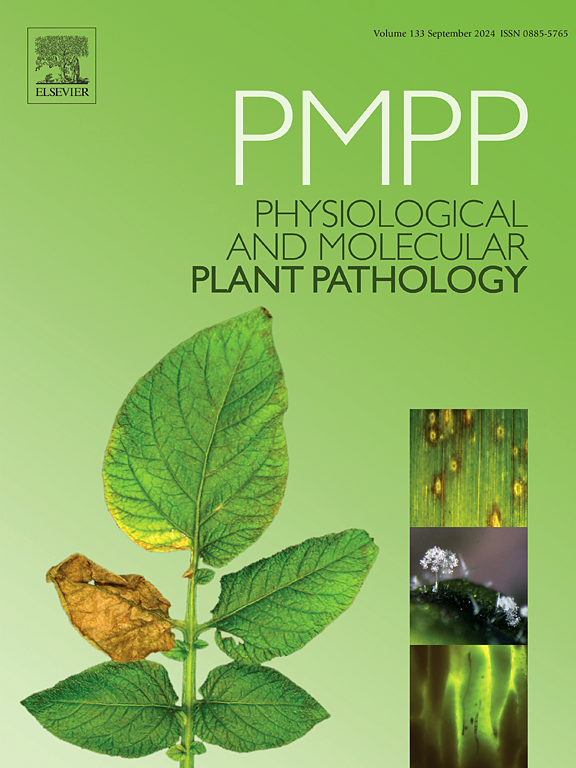Transcriptome-hormone network analysis tentatively reveals a chalcone synthase 1-dependent pathway for tobacco mosaic virus resistance in tobacco
IF 2.8
3区 农林科学
Q2 PLANT SCIENCES
引用次数: 0
Abstract
Tobacco mosaic virus (TMV) is one of the most widespread and common diseases in tobacco production and is extremely harmful to tobacco. Numerous studies have shown that flavonoids have a wide range of biological activities, such as UV protectors, signaling molecules in plant-microbe interactions, and antioxidants. CHS, a key phenylpropanoid pathway enzyme, catalyzes chalcone biosynthesis, which are precursors for anthocyanins and flavonols. These compounds regulate plant pigmentation and exhibit antioxidant, antiviral, and antibacterial properties. In the current study, we generated NtCHS1-overexpressing (CO) and interfering (CR) tobacco lines in HD and DBJ599 backgrounds, respectively. Transcriptome sequencing and phytohormone profiling (JA, SA, and derivatives) were performed at 0, 6, 12, 24, and 48 h post-TMV infection. Identification of 1867 specific differentially expressed genes (SDEGs), enriched in MAPK signaling, hormone transduction, and flavonoid pathways, with NAC, MYB, and WRKY transcription factors dominating the regulatory network. PCA of transcriptome data revealed three temporal clusters, with CR showing delayed responses at 48 h. Hormone analysis showed biphasic JA/SA patterns: JA declined until 24 h but rebounded at 48 h, while SA peaked at 6 h before suppression. CR exhibited reduced JA/SA compared to DBJ599, whereas CO showed SA deficiency. weighted gene correlation network analysis (WGCNA) highlights a green module that is closely linked to hormone dynamics. It contains Nitab4.5_0000662g0120, a putative hub gene in jasmonate biosynthesis, a gene that will be the focus of our future validation. The functional validation of Nitab4.5_0000662g0120 in this study remains incomplete as well as the molecular mechanism by which NtCHS1 cross-regulates SA-JA signaling has yet to be resolved. Despite these constraints, this research work deepens the understanding of flavonoid-hormone interactions in antiviral immunity and provides a roadmap for engineering anti-TMV crops through metabolic pathway modulation.

求助全文
约1分钟内获得全文
求助全文
来源期刊
CiteScore
4.30
自引率
7.40%
发文量
130
审稿时长
38 days
期刊介绍:
Physiological and Molecular Plant Pathology provides an International forum for original research papers, reviews, and commentaries on all aspects of the molecular biology, biochemistry, physiology, histology and cytology, genetics and evolution of plant-microbe interactions.
Papers on all kinds of infective pathogen, including viruses, prokaryotes, fungi, and nematodes, as well as mutualistic organisms such as Rhizobium and mycorrhyzal fungi, are acceptable as long as they have a bearing on the interaction between pathogen and plant.

 求助内容:
求助内容: 应助结果提醒方式:
应助结果提醒方式:


